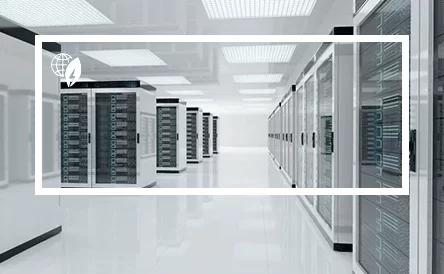
How Can Data Center Managers Prepare for Explosive AI Growth?
Interest in generative AI and large language models like ChatGPT has brought AI into the forefront of public conversation, but the capabilities of AI are vast. Supply chain management, research and analysis, and product marketing are just a few examples of how AI will be adopted by businesses to drive value for themselves and customers. AI will also see increased adoption in the healthcare, eMobility and energy generation and power industries as technology improves and businesses and governments grow more comfortable with its adoption.
All these factors are driving an increase in demand for the AI industry, which is expected to grow significantly in the coming decade up to nearly two trillion dollars by 2030.
New Technology Means New Demands
Behind the slick interfaces with which customers interact, an extreme amount of data and algorithms are put to work delivering the results users have come to expect. AI and machine learning applications require a massive amount of data processing, which requires high-performance chips on the cutting edge of IT development.
These powerful chips that enable AI require large amounts of power to operate and in turn give off more heat than less advanced applications. Data center managers need to manage these high heat loads while still maintaining the ability to scale their operations to meet demand. Scaling capabilities cannot always mean an increase in physical space—data center managers and engineers often need to solve the technical challenge of fitting more and hotter servers into the same spaces. They also need to maintain 24/7 uptime: the demands of AI applications will not stop to wait for a data center remodel.
A Shift in Cooling Approach
For next-generation chips and other AI infrastructure, traditional air cooling approaches simply will not get the job done on their own. Data centers that try to cope with additional heat loads by increasing air velocity can become wind tunnel-like environments that are difficult to work in and expensive to operate. When air cooling systems need to work overtime to maintain necessary operating temperatures, facilities also can experience equipment failures, unplanned downtime and high energy costs. For many data centers, liquid cooling can offer better performance while saving energy and helping data centers operate more sustainably. For the most high-tech applications, liquid and direct-to-chip cooling is the only feasible option.
Liquid cooling can help data centers increase capacity while maintaining efficient space and energy use. It also can offer a favorable return on investment and lower the total cost of ownership for data center facilities. Liquid cooling systems provide an effective solution for achieving the required temperature parameters and reducing the energy consumption of cooling systems. Liquid provides a much greater heat transfer capacity than air, which helps liquid cooling increase power usage effectiveness, managing heat loads effectively, reducing energy costs and contributing to environmental sustainability.
Solutions at Scale
Liquid cooling does not need to be all or nothing. Data centers can consider cooling a single rack or a small set of racks where AI and machine learning applications are housed without deploying full scale data halls that are liquid cooled and support rack after rack of equipment running high performance computing solutions.
However, when implementing these spot solutions, understanding future business plans is critical. Using dedicated cooling solutions to solve a unique problem is important, but due to cost, energy efficiency and other factors, a solution for one problem may not be the solution for another. As with all data center projects, different challenges require different solutions, and a one-size-fits-all approach rarely succeeds.
With the growth in demand for high performance computing driven by the expansion of AI, data center managers need to have a plan in place to scale their cooling solutions. This may mean planning next generation data centers to be fully liquid cooled or exploring hybrid liquid to air solutions that bring liquid cooling to the rack and chip level while operating within air-cooled infrastructure.
The biggest advantage that planning for the future and understanding IT workloads will bring is the realization that almost all potential cooling solutions can be built out in combinations, allowing data center managers to match their power and cooling capabilities with shifting demands. The key to sustainable growth is a variety of flexible options for supporting the next-generation equipment. Liquid cooling technologies help drive that flexibility.
A Solutions Approach to Data Center Cooling and Power
nVent offers optimized solutions for connecting and protecting mission critical data center and networking infrastructure. Our comprehensive portfolio of smart enclosures, power distribution, cable management and liquid cooling solutions help drive sustainability, resiliency and energy efficiency, while protecting critical systems for data center, networking and communication applications.
We focus on delivering products and solutions that enable our customers to deploy next-generation technologies safely and achieve efficiency requirements. By providing more efficient and effective mechanical, cooling, and power distribution solutions, we are helping data centers operate more safely and securely, reducing the risk of downtime and data loss.
Most importantly, our data center solutions experts work with customers to solve their challenges. We recognize that in this fast-evolving industry, data center managers need partners who are ready to react and respond to new technologies and trends.